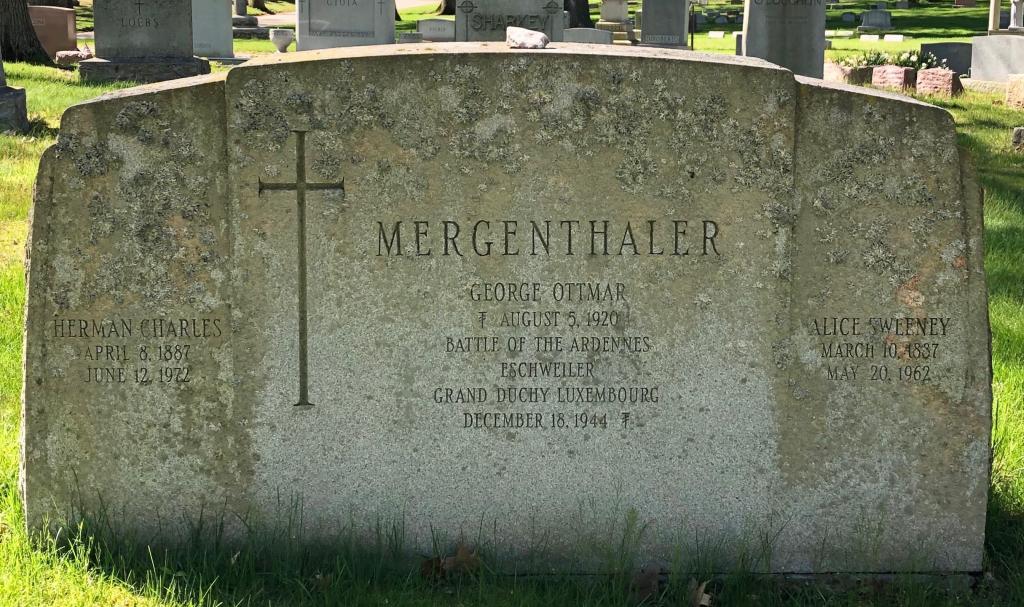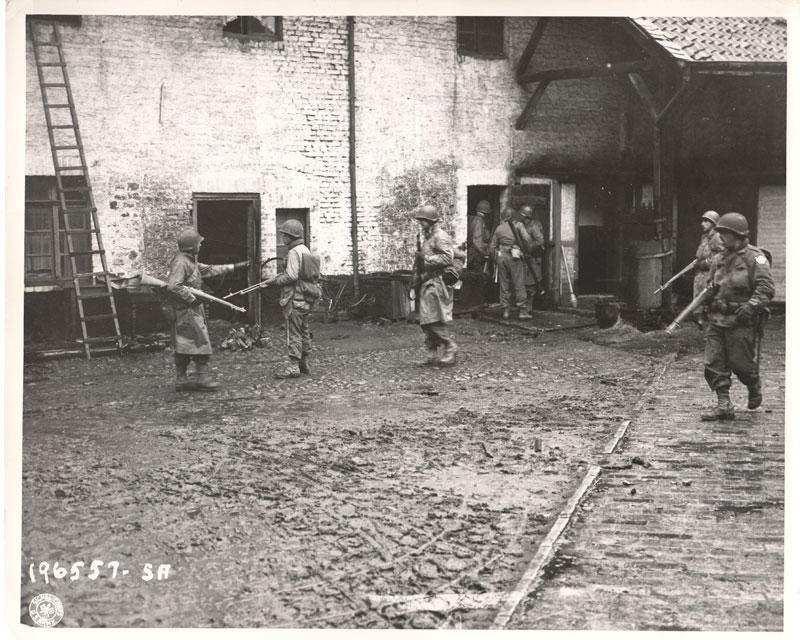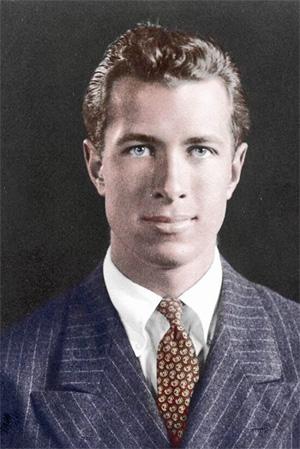He was the only son of an affluent Rye family and had graduated from Princeton University. He chose to serve in the lowest rank as a private.
When the Battle of the Bulge broke out, the troop was sent to reinforce divisional headquater in
Wiltz. Late in the morning on December 18th, a convoy of six vehicles left Eschweiler and
headed south towards Wiltz. As the line of vehicles neared the crossroads of Café Halte a
Germantank opened fire destroying the lead vehicle in the convoy. The GIs quickly ran for the
cover of the surrounding woods but German troops were everywhere. The Americans had
driven into an ambush. George, riding in the command jeep, the third vehicle in the convoy,
immediately jumped up and manned the .50 caliber machine gun mounted on the jeep. As he
sprayed the woods with machine gun bursts pinning down the enemy, the other GIs scambled
for cover or a way of escape. Then George’s gun jammed. As he worked to clear the jam, the
Germans began returning fire. Bullets sizzled the air or pinged off the sides of the jeep. One GI
saw what was happening and began firing with his M1 Gerrand. He saw a German soldier with
a submachine gun moving along a roadside ditch trying to get close to Mergenthaler. He took
aim and fired hitting the German in the hand. It bought enough time for George to clear the
jam, rethread the ammo and begin firing the .50 cal at the Germans once again. After a few
short bursts, the gun jammed once more and again George tried to clear it. The wounded
German saw what was happening, cradled his weapon on his arm and fired a burst at George,
striking him in the neck.
Officially George had been listed as MIA, but in late March of 1945 his body was discovered in a
shallow grave only a few hundred yards from the town that had come to love him. The
townspeople reburied George in the cemetary of the church where he had spent so much time
while he was in Eschweiler.
A few weeks later George’s parents found out what had happened to their only son when the
priest from St. Maurice wrote a letter informing them of their son’s fate. The priest also
explained how much George meant to the people of the town and how they felt as if George
was “one of their own”. Touched by the kindness the people of Eschweiler showed towards
their only son, the Mergenthaler’s offered to pay for the war-damaged church of St. Maurice to
be rebuilt.
Today the church in Eschweiler stands as a tribute to George Mergenthaler. It is the only church
in Luxembourg and perhaps the world that is dedicated to a single American soldier. Of the
many tributes to George that the church has to offer, perhaps none is more striking as the
mural painted on the back wall above the altar. There you’ll see the figure of Jesus feeding the
masses, aided by one of his apostles; an apostle wearing a field green American GI uniform and
bearing the likeness of George Mergenthaler..
George Ottman Mergenthaler
BIRTH 5 Aug 1920 New York, USA
DEATH 18 Dec 1944 (aged 24) Eschweiler, Canton de Wiltz, Diekirch, Luxembourg
BURIAL Holy Sepulchre Cemetery Rochester, Monroe County, New York, USA
PLOT Section: Sec21 East Plot: Grave: 2
 Information
Information

Warning: This is a relatively older thread
This discussion is older than 360 days. Some information contained in it may no longer be current.
- Knowledge Library

- MKL Entry of the Month
- Australia
- Austro-Hungarian Empire
- Canada
- Czechoslovakia
- Denmark
- Finland
- France/Belgium
- Germany
- Italy
- Japan
- Norway
- Russia
- South America
- Sweden
- Switzerland
- Turkey
- United Kingdom
- United States
- Yugoslavia
- Is my rifle authentic or a fake?
- Jay Currah's Lee Enfield Web Site
- On-line Service Records (Canada)
- Technical Articles/Research
- Forum
- Classifieds

- What's New?
-
Photo Gallery

- Photo Gallery Options
- Photo Gallery Home
- Search Photo Gallery List
-
Photo Gallery Search
- Video Club

- iTrader














 PM
PM

